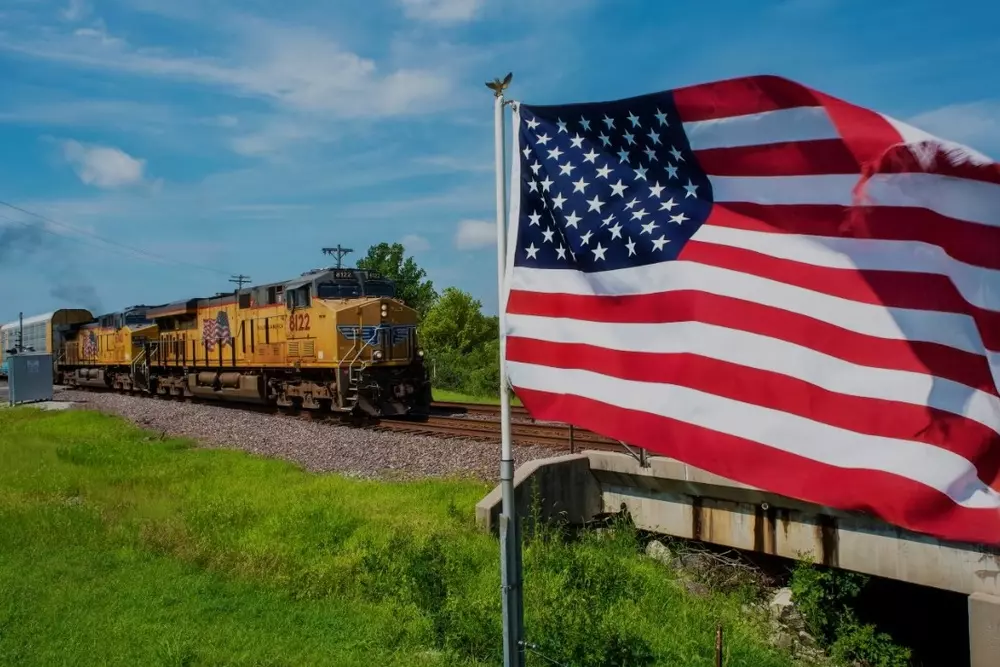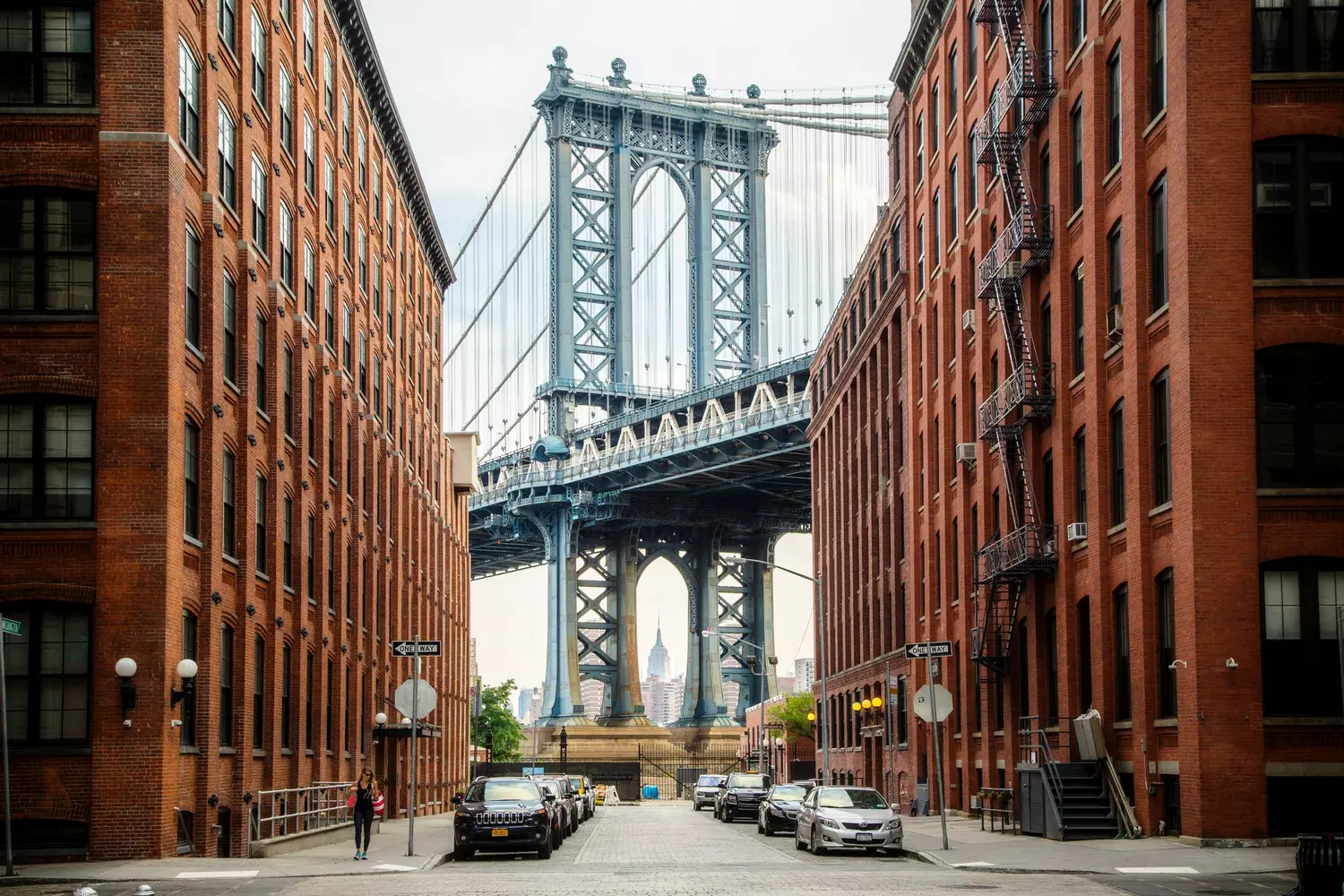Have you noticed how quickly the amount of stuff around us grows? You move into a new apartment — everything seems to fit. A year passes, and suddenly the closet doors won’t close, the overhead compartments are bursting with boxes, and the balcony has turned into a “just in case” storage area.
Each item seems necessary, but not right now. A vacation photo frame, an old armchair, a box of children’s toys, suitcases, winter clothes, books you can’t bear to part with. Gradually, we accumulate memories in a tangible, material form.
If you’ve ever moved — especially in the USA — you’ve probably faced this dilemma: where do you put all this stuff? Throwing it away feels wrong, selling it is inconvenient, and the new apartment hasn’t magically grown in size. At some point, even the most rational people start thinking: maybe it’s time to rent a kind of “temporary home” for your belongings?
Practical and organized Americans found a solution decades ago. They invented storage, or self-storage — individual units where you can leave your belongings for any length of time. These aren’t basements or old garages, but modern facilities with electronic locks, security cameras, and climate control systems.
Imagine this: you open a neat metal unit, place your boxes, furniture, or bicycles inside, lock it with a code, and walk away. Your items are safe, your home is freed up, and you can breathe easy.
The word “storage” in the USA has become as common as “supermarket” or “drive-thru.” In every neighborhood — whether in Florida, New York, or California — you’ll see entire blocks of tidy warehouses with identical doors. People rent them for a month, a year, or even decades. For some, it’s just a temporary solution during renovations; for others, it’s part of a lifestyle.
In the USA, there’s even a saying: “I’m between storages” — meaning someone is moving from one storage unit to another, much like from one apartment to another.
At first, the idea seems strange: paying for a place to keep your boxes? But spend even a few months in the USA, and you’ll understand — storage here isn’t a luxury, it’s part of everyday convenience. It’s a service just like dry cleaning, a PO box, or renting a parking spot.
And if you’re moving, traveling, living “out of a suitcase,” or just love keeping things tidy, sooner or later you’ll also think: “Maybe it’s time to rent a storage unit?”
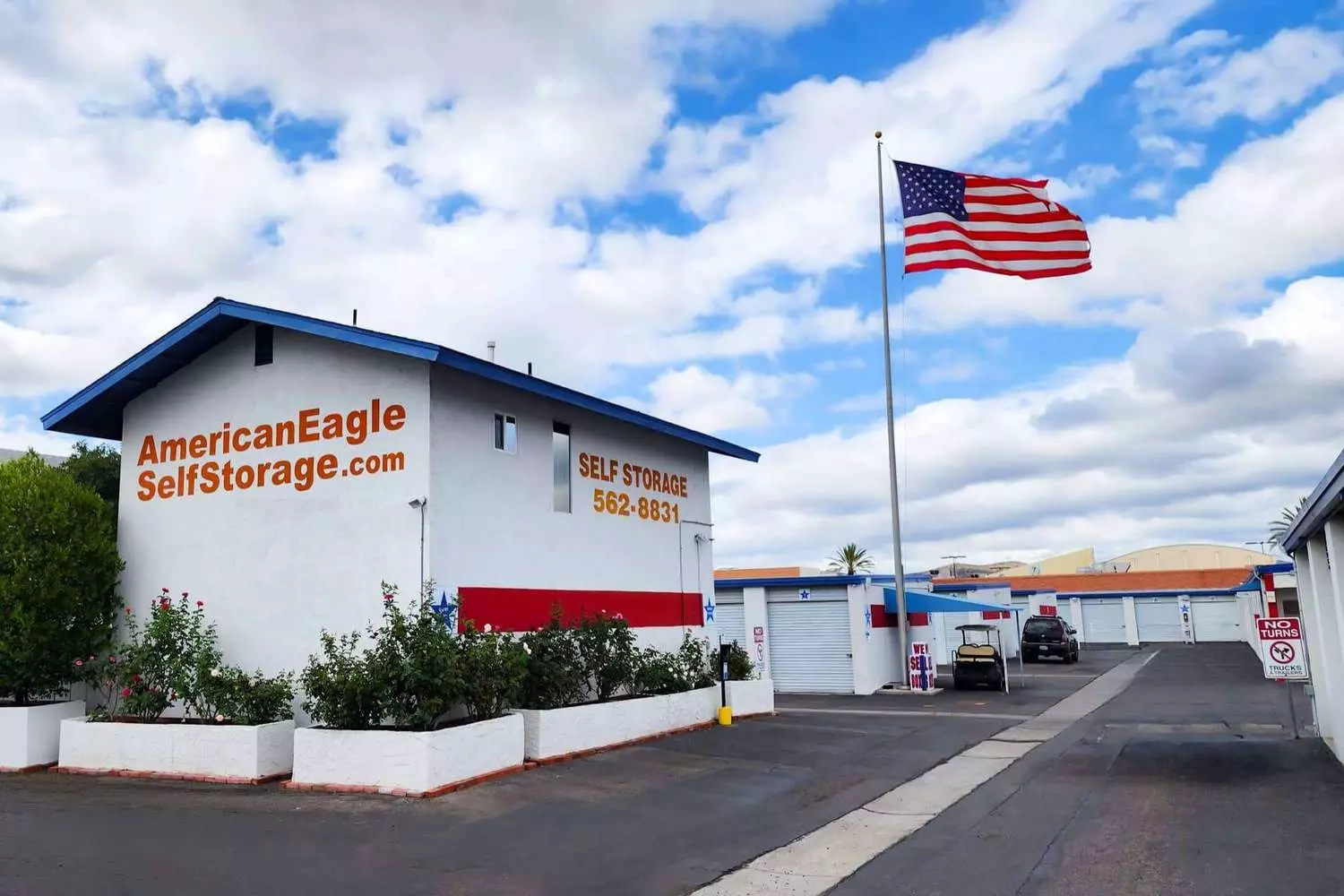
Fun fact: If you combined all the storage units in the USA into a single continuous complex, it would cover more area than Manhattan. A whole city, where instead of skyscrapers, there are thousands of neat doors — behind each one hides someone’s story.
How America Invented a Home for All the Extra Stuff
The history of self-storage in the USA is a fascinating example of how a simple human habit can give rise to an entire industry. It didn’t start with global corporations or high technology, but with a basic problem everyone knows: there’s always more stuff than space to store it.
- 01. From Farm Warehouses to Urban Units
It all began in the mid-1950s in hot Texas. Farmers and ranch owners used metal warehouses to store grain, equipment, spare parts, and seasonal gear. There was plenty of space, and homesteads were far apart — so a solution emerged: separate units where you could keep things you didn’t need immediately.
At first glance, it seemed ordinary. But this idea laid the foundation for a future billion-dollar business. Gradually, enterprising Americans got involved: some rented out extra warehouses to neighbors, others built rows of identical units and leased them.
As farms gave way to cities, the need for storage only increased. In the 1960s and 70s, the USA experienced a boom in moves and urbanization: people changed cities, jobs, and homes frequently. Apartments became smaller, life more mobile, and the amount of accumulated stuff grew. Thus began a new era — the era of storage units. - 02. Moves, Renovations, New Cities — and New Convenience
By the 1970s, the concept of a “temporary storage” had spread across the country. The first networks with uniform standards, 24/7 access, security, and climate control appeared.
The idea of self-storage entered American life as naturally as a laundromat or a corner supermarket. People began to treat storage units as an extension of their home — just with a separate address.
Interestingly, it was around this time that the term “self-storage” was coined — from the English words self (“yourself”) and storage (“storing”). The idea is simple: you decide what to store, when to come, and when to retrieve it — no middlemen, no unnecessary bureaucracy. - 03. America Built on Boxes
Today, it’s hard to imagine the USA without these neat rows of metal doors. Across the country, there are more than 55,000 storage facilities, and their number continues to grow each year.
For comparison, that’s more than the total number of McDonald’s and Starbucks combined.
Statistics show that about 10% of Americans use storage services at least once in their lives. The total storage space exceeds 2.5 billion square feet — enough for every person in the country to have almost three square meters of personal space for their belongings. - 04. Why Storage Became a Symbol of the American Lifestyle
Americans love order, but even more, they value freedom. Storage reflects this principle:
- No need to get rid of things just because there’s no space;
- You can live lightly without being burdened by clutter, yet keep everything you value;
- You can move every six months if you like, knowing your favorite armchair and a box of memories are safe in a reliable place.
Storage in the USA is no longer just a service — it’s part of the culture. People store not only furniture and appliances, but also memories, family heirlooms, old photo albums, and even Halloween decorations.
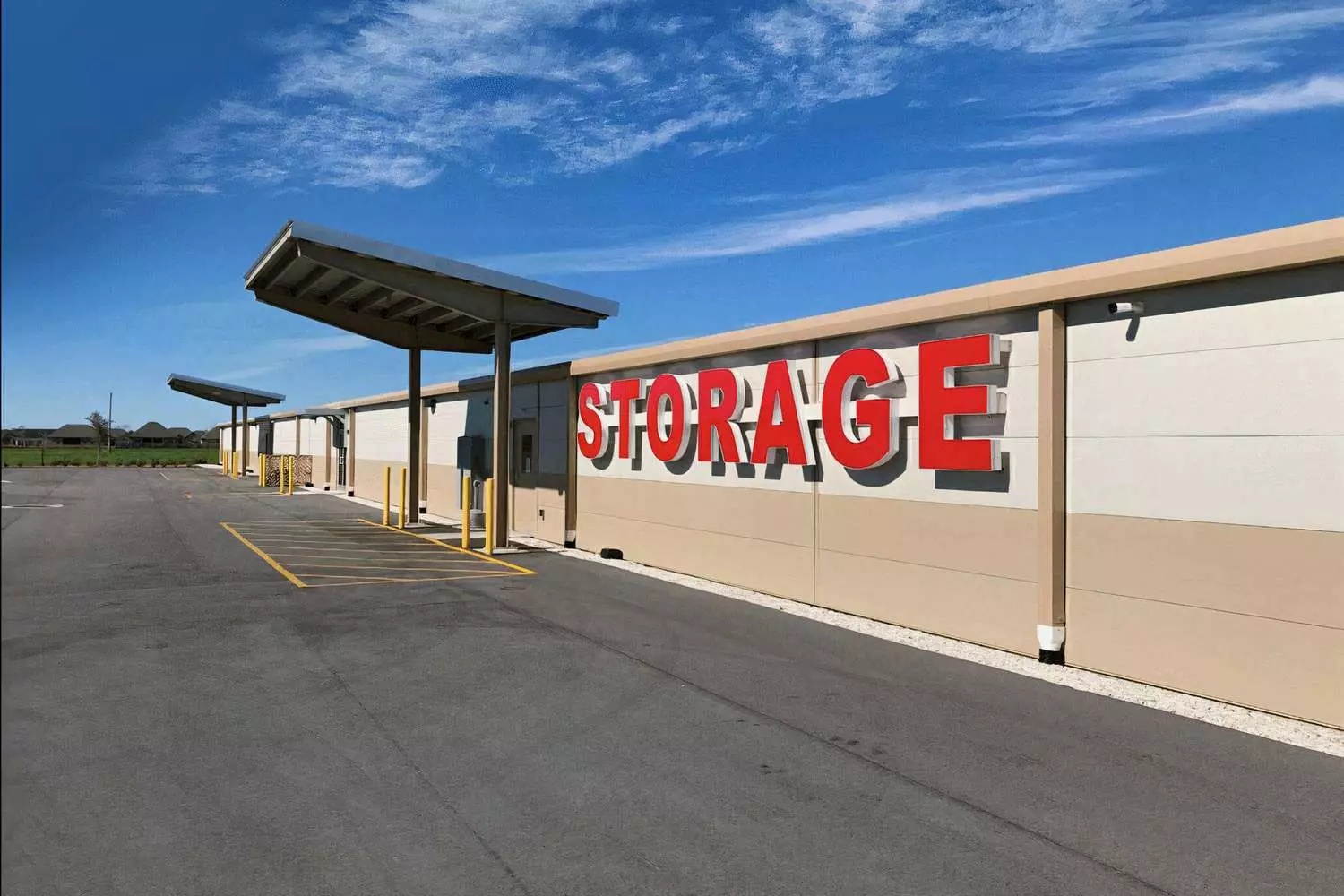
What You Can — and Absolutely Can’t — Store in a Storage Unit
The first time you enter an American storage facility, a strange feeling arises: it’s like stepping into a museum of personal stories. Behind every door is someone’s life, packed into boxes and suitcases. You can find everything here — from an old sofa to a wedding dress, from company archives to a vinyl record collection.
But to ensure your belongings not only fit but survive until you retrieve them, it’s important to know what you can store and what is strictly prohibited.
- 01. Furniture and Appliances — a Lifesaver During Moves and Renovations
This is probably the most common “resident” of American storage units. When people move, renovate, or relocate to another state, they don’t want to part with items that cost money or hold memories. In storage, you can keep:
- Sofas, armchairs, chairs, tables;
- Appliances — refrigerators, TVs, microwaves, washing machines;
- Decor items, lamps, mirrors, and even floor vases.
Tip: before storing furniture, clean it and cover it with protective wrap — this protects surfaces from dust and moisture. Some renters even turn a storage unit into a “mini apartment in a box”: a sofa in one corner, appliances in another, and boxes of clothing in a third.
- 02. Seasonal Items, Sports Gear, and Hobbies
If you’ve lived in the USA for a couple of years, you know: winter and summer feel like two different lives. In winter, you need skis, snowboards, down jackets, and hats; in summer — bikes, kayaks, and tents. All this takes up space at home but thrives in storage. People store here:
- Seasonal clothing, shoes, and suitcases;
- Sports equipment — from golf clubs to kayaks;
- Snowboards, tents, camping gear;
- Hobby tools: musical instruments, craft supplies.
Fact: in many American cities, storage facilities even have dedicated sections for bikes and surfboards.
- 03. Documents, Archives, and Business Papers
Self-storage is a real lifesaver for small businesses and freelancers. Thousands of companies in the USA rent units to store accounting archives, product samples, and office equipment. You can store:
- Accounting documents and contracts;
- Product samples, marketing materials;
- Inventory, packaging, and supplies;
- Exhibition stands and props.
Some owners even equip units with small shelves and lights to keep things organized.
Interesting: there are storage units certified for sensitive document storage — with restricted access and electronic control.
- 04. Collections, Books, and Artwork
For those who love collecting, preserving, and cherishing items, storage becomes a true salvation. Collectors, musicians, artists, and sentimental people store anything dear to them here. You can find:
- Paintings, posters, sculptures;
- Books, magazines, comics, vinyl records;
- Models, figurines, antiques, souvenirs;
- Vintage toys and photo albums.
Pro Tip: for such items, climate-controlled storage is ideal — temperature and humidity are stable, so paper won’t yellow, paint won’t run, and wood won’t crack.
- 05. Boxes of “Just in Case” Stuff
Some renters have no specific reason for renting a storage unit. They simply don’t want to throw away the past. These include:
- Old children’s toys;
- Holiday decorations;
- “For later” items — from extra kitchenware to a coffee grinder nobody uses;
- Old photo albums, letters, travel souvenirs.
And this isn’t chaos — it’s memories carefully packed in boxes.
- 06. What You Cannot Store
American law is strict here, and for good reason. Storage units prohibit anything that could spoil, catch fire, explode, or pose a threat to other renters. Here’s a list of strictly forbidden items:
- Food and perishable goods;
- Live plants and especially animals;
- Weapons, ammunition, explosives;
- Gasoline, oils, liquids, paints, and chemicals;
- Medications, narcotics;
- Cash, valuables, and critical documents (for these, use bank safes).
Violating the rules can result not only in fines but also in lease termination. In the USA, this is strictly enforced: each company regularly inspects units and has the right to open them if suspicious activity is detected.
A storage unit is not a junkyard or a closet — it’s an organized space to maintain order in your life. Only store what’s truly valuable, necessary, or sentimental. Everything else is better sold, given away, or let go.
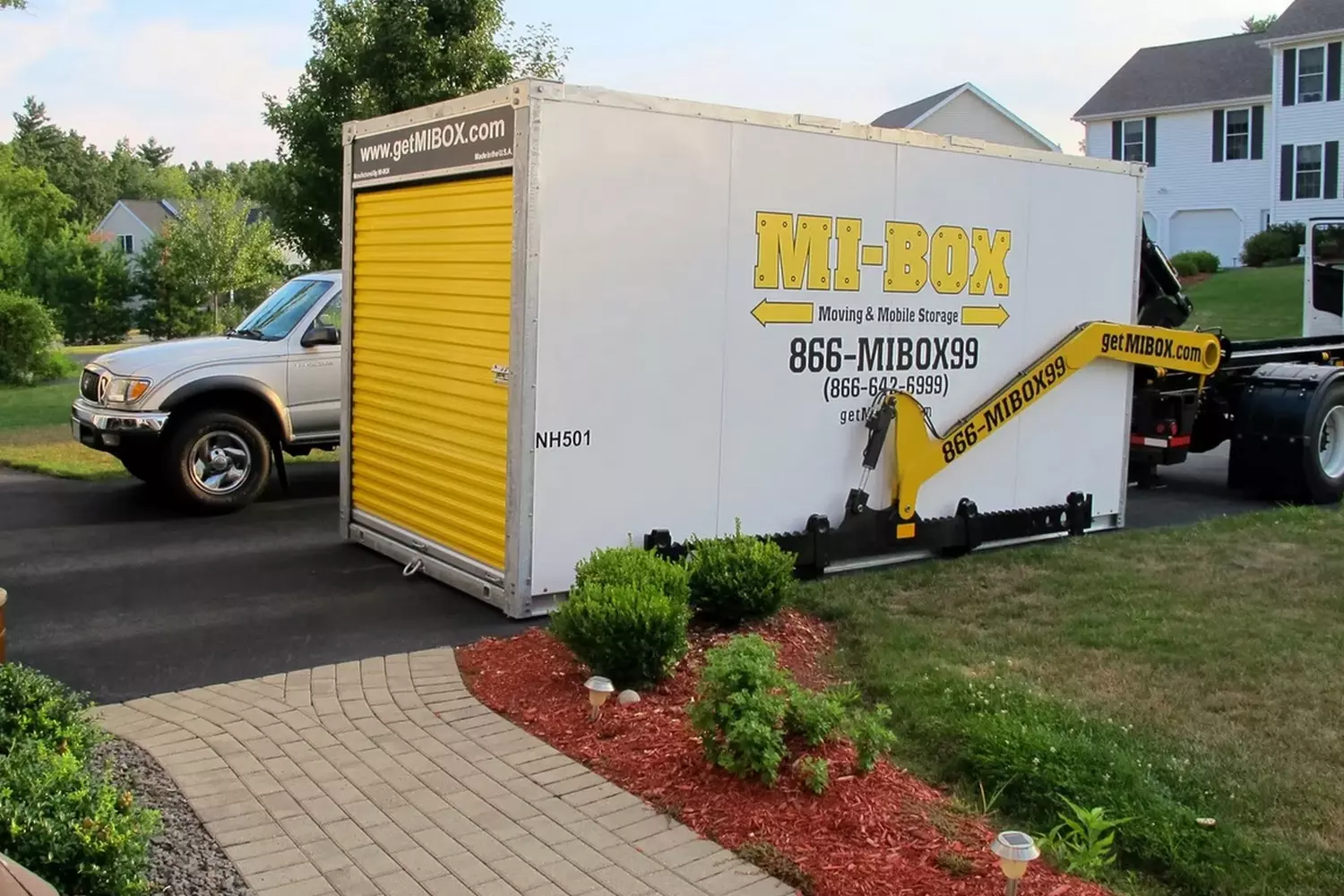
Types of Storage Units in the USA — From “Garage for an Hour” to Climate-Controlled Vaults
The first time you enter an American storage facility, a strange feeling arises: it’s like stepping into a museum of personal stories. Behind every door is someone’s life, packed into boxes and suitcases. You can find everything here — from an old sofa to a wedding dress, from company archives to a vinyl record collection.
But to ensure your belongings not only fit but survive until you retrieve them, it’s important to know what you can store and what is strictly prohibited.
- 01. Furniture and Appliances — a Lifesaver During Moves and Renovations
This is probably the most common “resident” of American storage units. When people move, renovate, or relocate to another state, they don’t want to part with items that cost money or hold memories. In storage, you can keep:
- Sofas, armchairs, chairs, tables;
- Appliances — refrigerators, TVs, microwaves, washing machines;
- Decor items, lamps, mirrors, and even floor vases.
Tip: before storing furniture, clean it and cover it with protective wrap — this protects surfaces from dust and moisture. Some renters even turn a storage unit into a “mini apartment in a box”: a sofa in one corner, appliances in another, and boxes of clothing in a third.
- 02. Seasonal Items, Sports Gear, and Hobbies
If you’ve lived in the USA for a couple of years, you know: winter and summer feel like two different lives. In winter, you need skis, snowboards, down jackets, and hats; in summer — bikes, kayaks, and tents. All this takes up space at home but thrives in storage. People store here:
- Seasonal clothing, shoes, and suitcases;
- Sports equipment — from golf clubs to kayaks;
- Snowboards, tents, camping gear;
- Hobby tools: musical instruments, craft supplies.
Fact: in many American cities, storage facilities even have dedicated sections for bikes and surfboards.
- 03. Documents, Archives, and Business Papers
Self-storage is a real lifesaver for small businesses and freelancers. Thousands of companies in the USA rent units to store accounting archives, product samples, and office equipment. You can store:
- Accounting documents and contracts;
- Product samples, marketing materials;
- Inventory, packaging, and supplies;
- Exhibition stands and props.
Some owners even equip units with small shelves and lights to keep things organized.
Interesting: there are storage units certified for sensitive document storage — with restricted access and electronic control.
- 04. Collections, Books, and Artwork
For those who love collecting, preserving, and cherishing items, storage becomes a true salvation. Collectors, musicians, artists, and sentimental people store anything dear to them here. You can find:
- Paintings, posters, sculptures;
- Books, magazines, comics, vinyl records;
- Models, figurines, antiques, souvenirs;
- Vintage toys and photo albums.
Pro Tip: for such items, climate-controlled storage is ideal — temperature and humidity are stable, so paper won’t yellow, paint won’t run, and wood won’t crack.
- 05. Boxes of “Just in Case” Stuff
Some renters have no specific reason for renting a storage unit. They simply don’t want to throw away the past. These include:
- Old children’s toys;
- Holiday decorations;
- “For later” items — from extra kitchenware to a coffee grinder nobody uses;
- Old photo albums, letters, travel souvenirs.
And this isn’t chaos — it’s memories carefully packed in boxes.
- 06. What You Cannot Store
American law is strict here, and for good reason. Storage units prohibit anything that could spoil, catch fire, explode, or pose a threat to other renters. Here’s a list of strictly forbidden items:
- Food and perishable goods;
- Live plants and especially animals;
- Weapons, ammunition, explosives;
- Gasoline, oils, liquids, paints, and chemicals;
- Medications, narcotics;
- Cash, valuables, and critical documents (for these, use bank safes).
Violating the rules can result not only in fines but also in lease termination. In the USA, this is strictly enforced: each company regularly inspects units and has the right to open them if suspicious activity is detected.
A storage unit is not a junkyard or a closet — it’s an organized space to maintain order in your life. Only store what’s truly valuable, necessary, or sentimental. Everything else is better sold, given away, or let go.
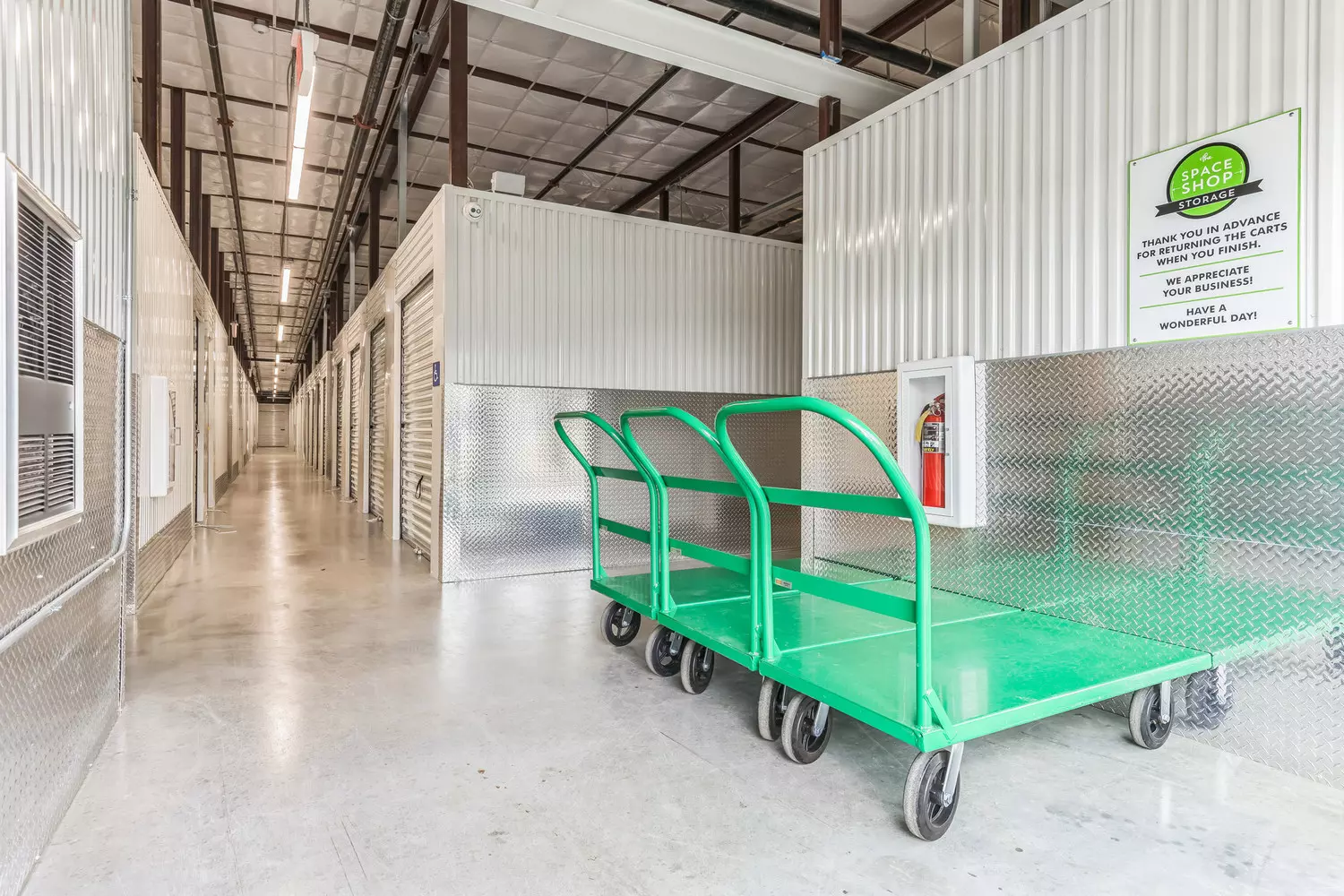
How to Choose the Perfect Storage Unit in the USA: A Checklist for Newcomers and Pros
Choosing a storage unit in the USA is almost like choosing a new apartment. At first glance, it seems simple: there’s a price, there are sizes. But, as with housing, the details determine comfort and security. A small mistake can result in lost belongings or constant inconvenience. Let’s break down what really matters.
- 01. Location — close to home, not just to a discount
The most common mistake for beginners is choosing the cheapest option across town. Yes, saving $10–20 a month seems tempting, but imagine: every time you need to pick up a box, you drive across the city, sit in traffic, and pay for parking.
- Tip: choose a storage facility near your home, office, or along routes you frequently travel. Sometimes slightly more expensive but closer — it’s a huge gain in time and peace of mind.
- Fact: in major US cities, the average travel time to a storage unit is about 12 minutes. Those living farther often overestimate the convenience of a “cheap but distant” location.
- 02. Security — peace of mind above all
A storage unit isn’t just a place for things, but also for memories. That’s why security is critical. Pay attention to:
- Video surveillance covering all corridors and units;
- Electronic gates with personal codes;
- Personal locks and the ability to use your own;
- Lighting throughout the facility, especially in the evening and at night;
- Patrols or on-site security.
Large chains like Public Storage, Extra Space Storage, CubeSmart offer 24/7 access and alarm systems.
- 03. Climate Control — protection from unpredictable weather
America is a country of contrasts. In the South — for example, Florida, Texas, Arizona — temperatures can exceed +40 °C (104 °F), and humidity can damage furniture, books, and electronics. In northern states, sharp temperature changes and dampness can ruin wooden items and documents.
Climate-controlled storage maintains stable temperature and humidity. It’s more expensive than standard units, but the savings on potential damage far outweigh the extra cost.
Hack: even if you store regular boxes of clothing, a small climate-controlled unit reduces the risk of unpleasant odors and mold. - 04. Price and Insurance — don’t chase cheapness
The average unit costs $50–$250 per month, depending on size and city. Sometimes companies offer bonuses:
- Discounts for the first month;
- Free lock when renting online;
- Special promotions for new customers.
Always check whether insurance is included. Even with good security, items can be damaged: floods, power outages, a neighbor’s damaged unit — such cases do happen.
- 05. Size — from “closet” to “garage”
Too small a unit — constant problems. Too large — overpaying. Popular sizes include:
- 5×5 ft (1.5×1.5 m) — mini-closet, perfect for documents and boxes;
- 5×10 ft (1.5×3 m) — fits the contents of a one-bedroom apartment;
- 10×10 ft (3×3 m) — holds furniture and appliances from 2–3 rooms;
- 10×20 ft (3×6 m) and larger — a full garage, can store a car and large items.
Hack: always rent a unit 10–15% larger than you think you need. A couple of extra boxes can solve storage problems for months.
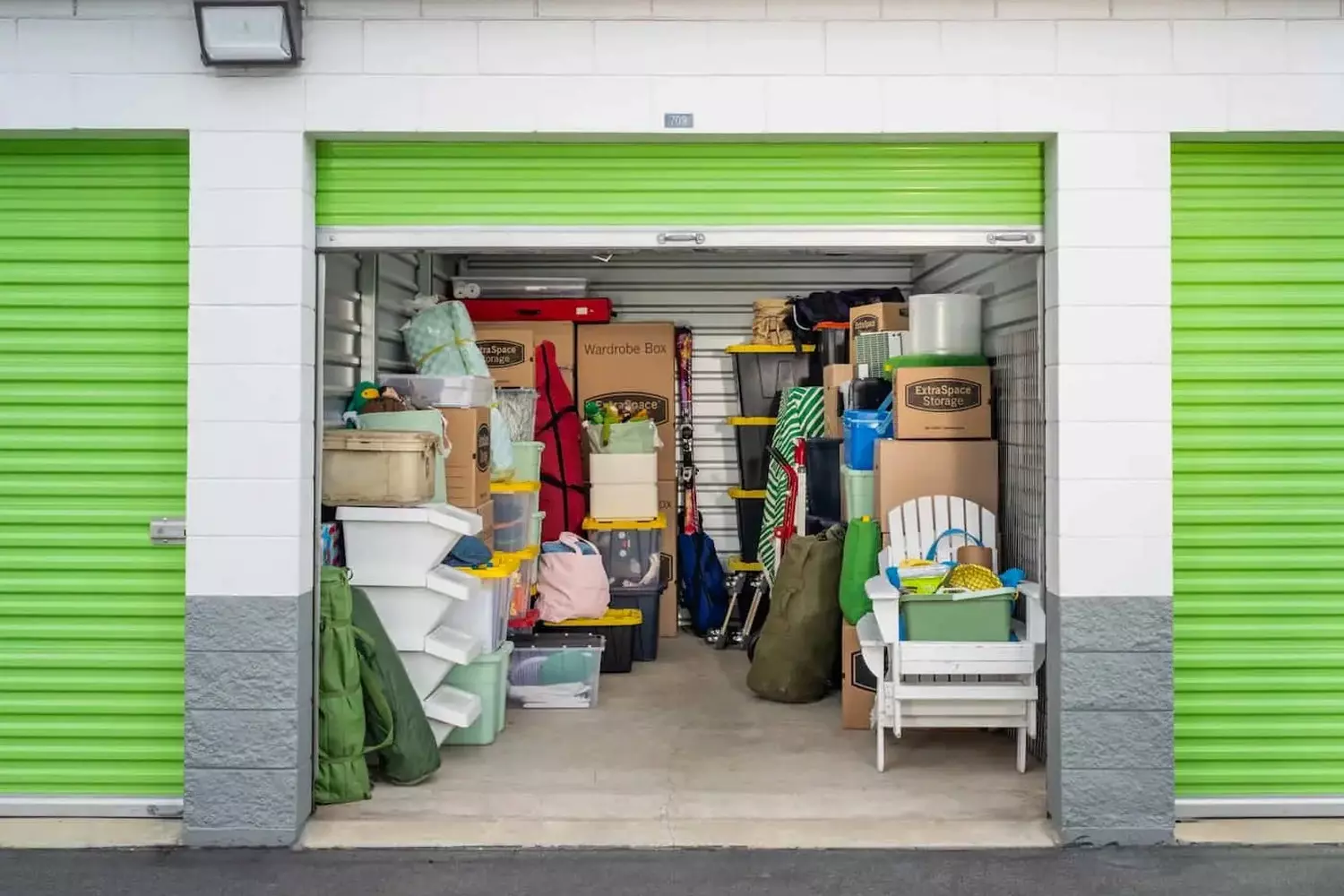
How to Rent a Storage Unit in the USA: Step-by-Step Guide
Many people think renting a storage unit is complicated. In reality, it’s much simpler than it seems. It’s almost like signing a lease for an apartment — just faster and with less paperwork. Let’s go through each step so you know exactly what to expect.
- 01. Choosing a storage facility
The first step is to determine where and what you want to store.
- Unit size
Think about how many boxes, furniture, and belongings you want to store. A small unit is convenient but fills up quickly. A larger one costs more but is comfortable. - Type of storage
Drive-up, indoor, climate-controlled, or premium? It all depends on what you are storing. - Location
The closer to your home or route, the more convenient.
Hack: most major chains allow online reservations. Sometimes it’s cheaper than booking in person.
- 02. Online booking or office visit
In the USA, you can handle everything remotely via the company’s website. You choose:
- The unit and its size;
- The rental period (usually month-to-month);
- Payment method (card, auto-pay, PayPal).
If you prefer face-to-face interaction, you can visit the office: a manager will show available units, explain terms, and give recommendations.
- 03. Signing the rental agreement
The contract is usually simple:
- Specifies access conditions, hours, and storage rules;
- Records the unit size and rental cost;
- Signed online or in person.
Important: read the liability clause. Even if the units are secured, companies are not responsible for items without insurance.
- 04. Receiving keys, codes, and locks
After signing, you will receive:
- Your personal gate code and/or electronic access card;
- Instructions on using the lock;
- Sometimes the lock is provided for free with online rental.
- 05. Moving and organizing your belongings
Now comes the fun part — placing your things in the unit.
- Drive-up storage allows unloading directly from your car.
- Indoor and climate-controlled units require moving items through hallways or elevators.
- Portable storage can be loaded at home, and the company will transport the container to their facility.
Tip: take photos of the unit’s contents. It will be easier later to remember where things are.
- 06. Payment and renewal
Payment is usually automatic:
- Charged monthly from your card;
- Option to cancel the rental at any time;
- Sometimes there are promotions: first month free or discounts for prepaying several months.
- 07. Accessing your unit
After completing all steps, you become the rightful owner of your belongings:
- Access anytime with your code (if 24/7 access is available);
- Check the condition of your items;
- Add new boxes or retrieve old ones as needed.
Hack: organize boxes so frequently used items are in front and rarely used ones in the back. This saves a lot of time.
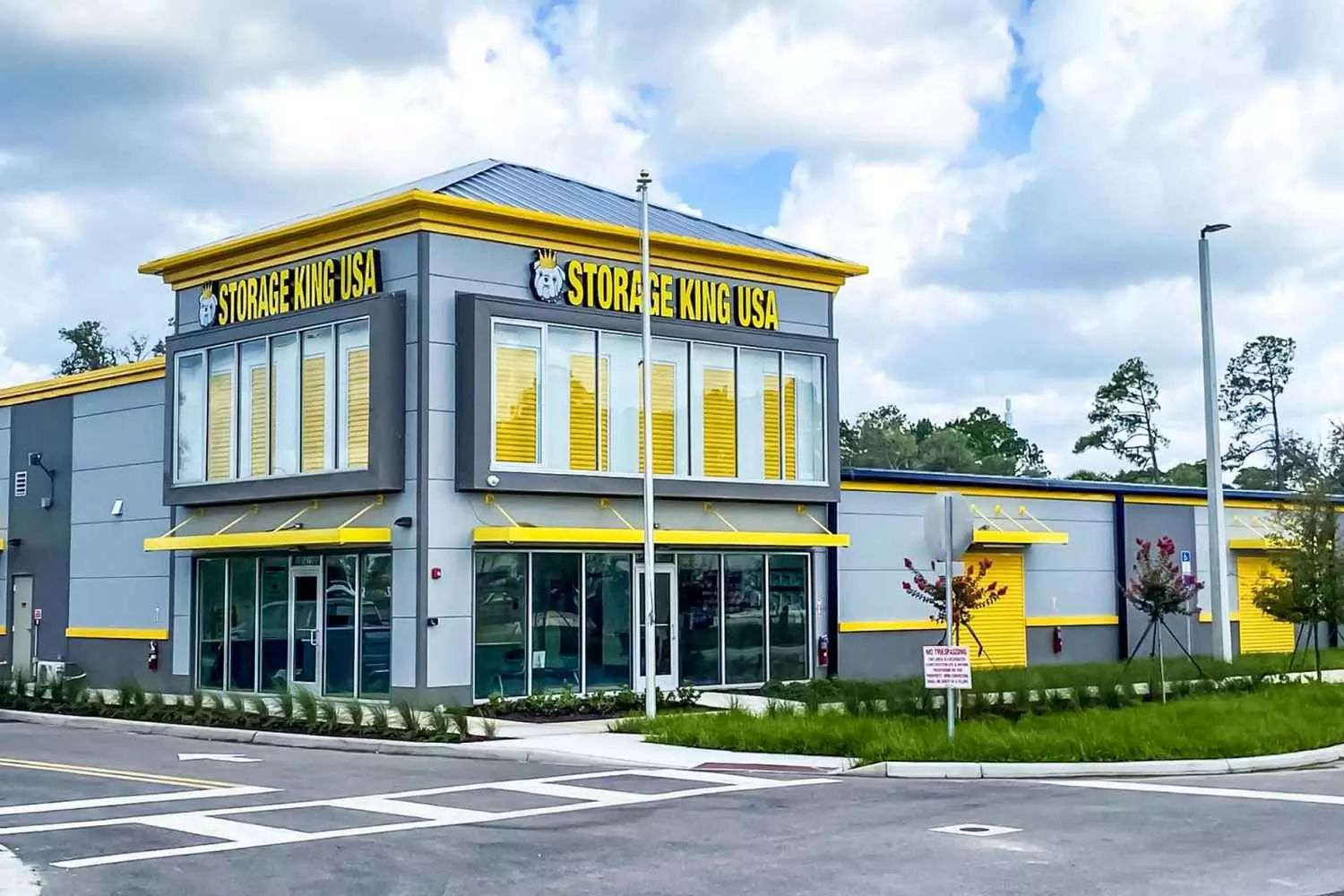
Storage Rental Life Hacks: How to Save Money and Make It Easier
Renting a storage unit in the USA may seem straightforward: pick a unit, pay, put your things in, and forget about it. But if you approach it smartly, you can save money, time, and stress, making the whole process as convenient as possible. Here are proven tips that really work.
- 01. Book online — discounts are waiting for you
Almost all major storage chains — Public Storage, Extra Space Storage, CubeSmart, Life Storage — offer 10–20% discounts when booking through their website. Why it’s worth it:
- Online booking saves time — no need to go and choose a unit on-site.
- Some companies offer a free lock or the first month free.
- You can check availability of the right size and type in advance.
- 02. Rent units on weekdays
Demand for storage is higher on weekends, which means prices can rise and fewer units are available.
- Plan your booking Monday–Thursday — selection is usually better and prices more favorable.
- Managers are more attentive on weekdays: fewer customers, more time to explain rental details.
- Tip: if you live near the storage office, booking in the morning may give you extra perks or help with transport.
- 03. Don’t buy packing supplies on-site — they’re more expensive
Many renters make the typical mistake of buying boxes, tape, and wrap directly at the storage office.
- On-site prices are 2–3 times higher than at regular stores or online.
- 04. Share a unit with a friend
Yes, it’s legal if both people are listed on the rental agreement. Benefits:
- Convenient if storing seasonal items — skis and snowboards for one person in winter, bikes and tents for another in summer.
- Splits costs evenly — up to 50% savings.
- Can share a unit for business purposes: personal items in one part, business documents or products in another.
- Interesting: in some large US cities, renters create “mini-communities” of units — shared use increases space and reduces cost.
- 05. Compare insurance options
Even in secure facilities, unforeseen situations happen: flooding, power outages, or damage from a neighboring unit.
- Some chains sell their own on-site insurance.
- Sometimes it’s more advantageous to use credit card insurance, which covers property outside your home.
- Check coverage terms: limits, exclusions, and deductibles.
Common renter mistakes
Even with a simple service like storage, there are nuances. Here are the top 5 mistakes to avoid:
- Choosing a unit that’s too small
It may seem like enough space, but in reality items take up more room than expected. Better to get slightly bigger for future needs. - Skipping insurance
Many neglect it, and in vain. Even with good security, there’s always a risk of flooding or damage. - Poor packing
Plastic bags instead of boxes are a bad idea: moisture, condensation, odors. Better use cardboard and sealed containers. - Storing without climate control in hot climates
Especially damaging for electronics, books, and furniture. - Lack of organization
After six months, you’ll forget where things are. Take photos and make a simple layout — saves time and stress.

Top Storage Chains in the USA: Where to Find Safe and Convenient Storage
America is the birthplace of self-storage, and choosing the right unit can sometimes be trickier than it seems. Hundreds of companies, thousands of locations, and countless unit types exist. But there are major chains that have earned renters’ trust, offering convenience, security, and transparent terms.
- 01. Public Storage — the largest chain in the country
- Over 2,500 locations nationwide;
- Convenient online booking and autopay;
- Frequent promotions — first month free or discounts up to 20%;
- Drive-up and climate-controlled units;
- Free lock with online rental.
Public Storage was the first company to standardize unit sizes and rental terms, making self-storage a mainstream business. Average price: $50–200 per month depending on size and city.
- 02. Extra Space Storage — top-notch cleanliness and service
- Various unit types, including premium and climate-controlled;
- Excellent security: cameras, alarms, access codes;
- Promotions: first month free, discounts for new customers;
- Ability to book online and change unit size without penalties;
- Average price: $60–250/month
- 03. Life Storage — reliability and flexibility
- Many locations in major cities;
- Different unit types, including drive-up and indoor;
- Friendly staff, easy to extend or switch units;
- Promotions for new customers — 10–15% discount.
Life Storage often provides temporary storage for students and seasonal workers — convenient if you stay in the US for a few months. Average price: $70–240/month
- 04. CubeSmart — ideal choice for long-term storage
- Great terms for long-term rentals;
- 24/7 access, video surveillance, personal locks;
- Drive-up and climate-controlled units;
- Free consultation on choosing size and type;
- Average price: $60–220/month
- 05. U-Haul Storage — convenient for combining with moving
- Professional moving and storage services in one;
- Drive-up units and portable storage;
- Option to rent a moving truck at the storage location;
- Promotions and discounts for bundled “truck + unit” service.
Many Americans use U-Haul Storage as a temporary warehouse during renovations or apartment changes — one of the most convenient options for mobile people. Average price: $55–230/month
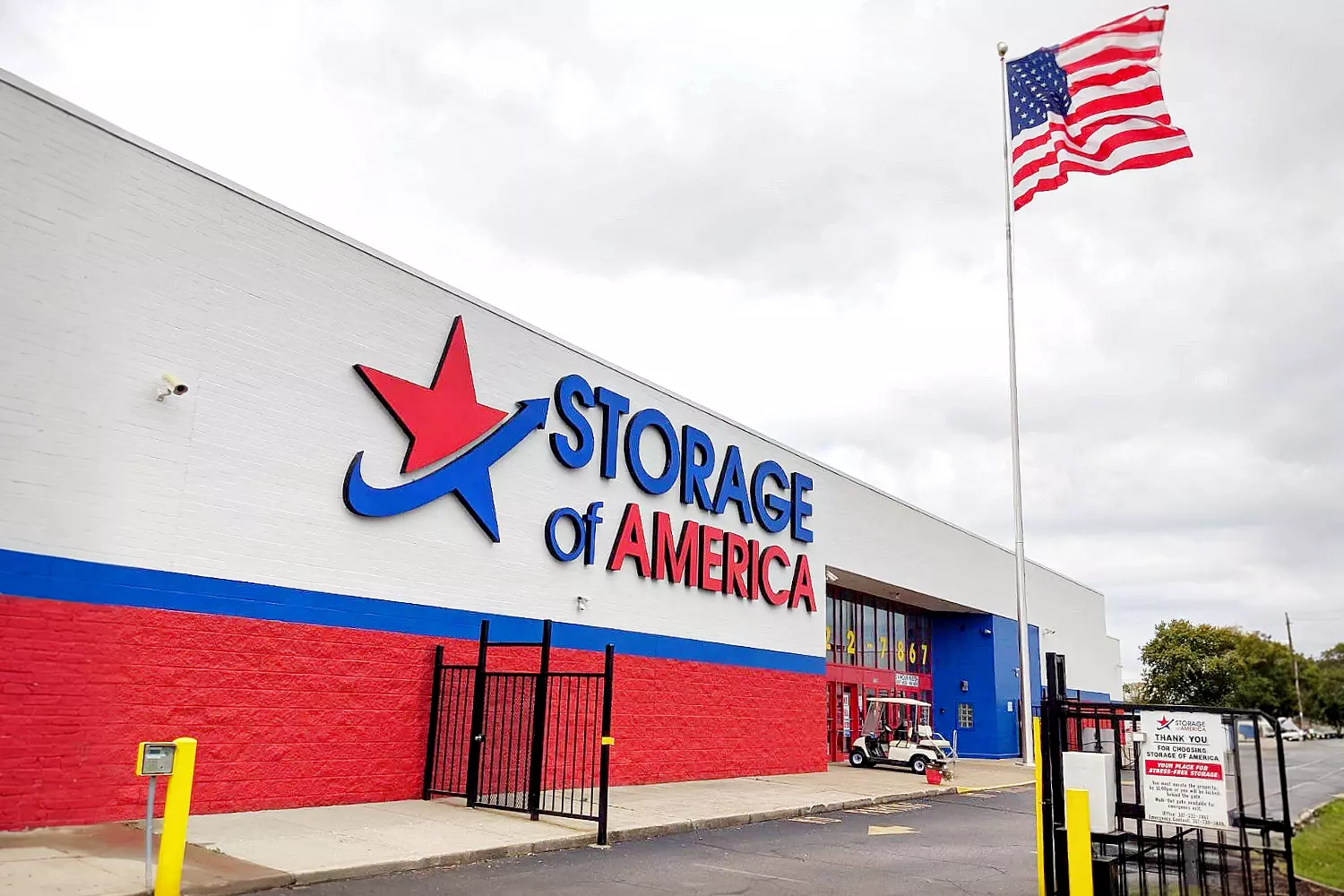
Storage for Travelers and Movers: How to Make Temporary Storage Easy and Convenient
America is a vast country, and for tourists or those moving from city to city, self-storage can be a real lifesaver. It helps free up your hands, keep valuables safe, and make travel or relocation as comfortable as possible.
- 01. For tourists: “vacation-time” storage
If you’re visiting the US for a few months or planning a long vacation, a storage unit can be a real helper:
- Reduces extra baggage
Instead of carrying winter clothes or sports gear, you leave everything in a unit. - Keeps personal belongings safe
Expensive apartments and hotels often lack space or proper storage conditions, while a storage unit is fully secure. - Flexible rental
Almost all companies offer month-to-month contracts without long-term commitments, ideal for tourists.
Tourists often rent small climate-controlled units for clothing, cameras, laptops, and souvenirs. Even in hot or humid weather, items stay in perfect condition.
- 02. For people moving: secure storage during relocation
Moving in the US is almost always a logistical puzzle: the new apartment isn’t ready yet, furniture and boxes need somewhere to go, and transportation can take days or weeks. Storage helps to:
- Break the move into stages
You don’t have to move everything to the new place at once. - Protect belongings during renovations or while waiting for keys
Even if the apartment isn’t ready for occupancy, your items remain safe. - Save on transportation
Instead of making multiple truck trips, you leave items at a storage facility and retrieve them as needed.
Use portable storage units — the container is delivered to your old home, you load your items, and the company transports the container to the warehouse. This saves time and effort.
- 03. Tips for organizing items for tourists and movers
- Label boxes
Write what’s inside so you don’t have to remember. - Photograph contents
Take a photo of each box — it helps when looking for specific items. - Sort items by category
Clothes, documents, electronics, souvenirs — makes navigation easier. - Use shelving
In larger units, shelves help maximize space efficiently.
Self-storage in the US isn’t just a warehouse; it’s a tool for freedom and mobility. It allows you to:
- Travel light without being burdened by extra luggage;
- Move without stress and hurry;
- Keep belongings safe and organized;
- Organize temporary space without long-term commitments.
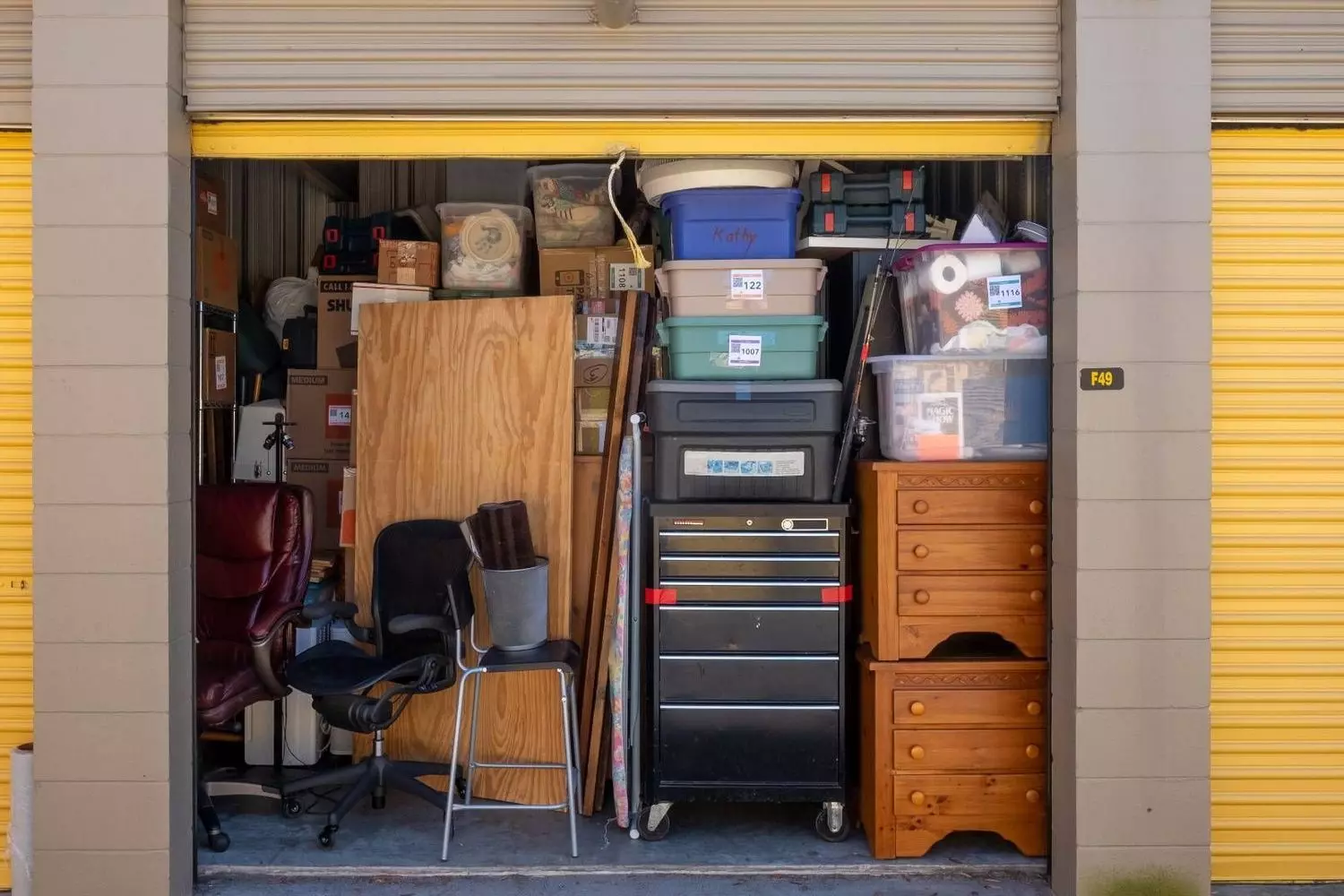
The Secret World of Abandoned Storage Units: How Other People’s Stuff Becomes Business and Entertainment
America is the birthplace of self-storage, and behind the facade of neat rows of metal doors lies an entire culture of forgotten units and their unexpected value. Forgotten storage units are not just places for keeping things — they are miniature micro-worlds filled with stories, secrets, and business opportunities.
- 01.What is a “forgotten storage unit”
A forgotten or unclaimed storage unit is one whose rent has not been paid on time. In the US, where contracts are strictly enforced, companies have the right to sell the contents of such units at auction.
- Usually, the owner receives multiple late payment notices, but if no payment is made, the unit is considered abandoned.
- Items inside range from furniture and appliances to collectibles, antiques, and random clutter.
- Everything is sold at public auctions starting from $50–100.
Sometimes these auctions reveal true treasures — antique clocks, collectible toys, or vintage electronics worth many times more than the unit price.
- 02.TV shows about storage: culture on screen
Americans’ fascination with “other people’s storage” has spawned popular TV shows across the country:
- Storage Wars
A cult show where teams compete for abandoned units. They bid blindly and open the doors only after purchase. - Auction Hunters and Storage Hunters
Show how experienced buyers search for treasures among old belongings. - Cash and Treasures
Stories of ordinary people finding antiques and turning a profit.
The popularity of these shows has turned forgotten unit auctions into tourist attractions: spectators come to watch units being “won,” and some participate themselves.
- 03.People who make money from forgotten units
In the US, there’s a whole category of professionals — storage hunters — who turn it into a business:
- Professional auctioneers
They know how to estimate a unit’s value and what might be inside. - Collectors
Often buy units to pick out rare items and resell the rest. - Small businesses
People resell furniture, electronics, sports equipment, and antiques via eBay, Craigslist, or Amazon. - Investors and enthusiasts
View purchasing units as a form of speculative investment: the cost is low, but potential profit can be huge.
Some buyers know from experience that certain city areas “produce” more valuable items — from vintage furniture to designer clothes.
- 04.Forgotten storage is a whole culture
For many Americans, this is not just business — it’s a lifestyle and entertainment.
- People interact on forums and groups, sharing finds and strategies.
- Clubs and events exist dedicated to storage hunting.
- Auctions have become almost a real-life social network: friends come, bid, discuss items, and exchange stories.
- 05.Most interesting finds
At forgotten unit auctions, people have discovered:
- Vintage toys now worth thousands of dollars;
- Antique paintings and musical instruments;
- Collectible coins and rare books;
- Old letters and photo albums with family history;
- Furniture and appliances that can be easily resold or restored.
One of the most expensive “won” units on Storage Wars cost only $500, but the items inside were later sold for more than $30,000.
Forgotten storage units are not just a business or a game of chance — they are a culture, a history, and a mini-museum of someone else’s life. For tourists and people moving, these units offer a chance to experience a unique American tradition and even make money if you know how to approach it.
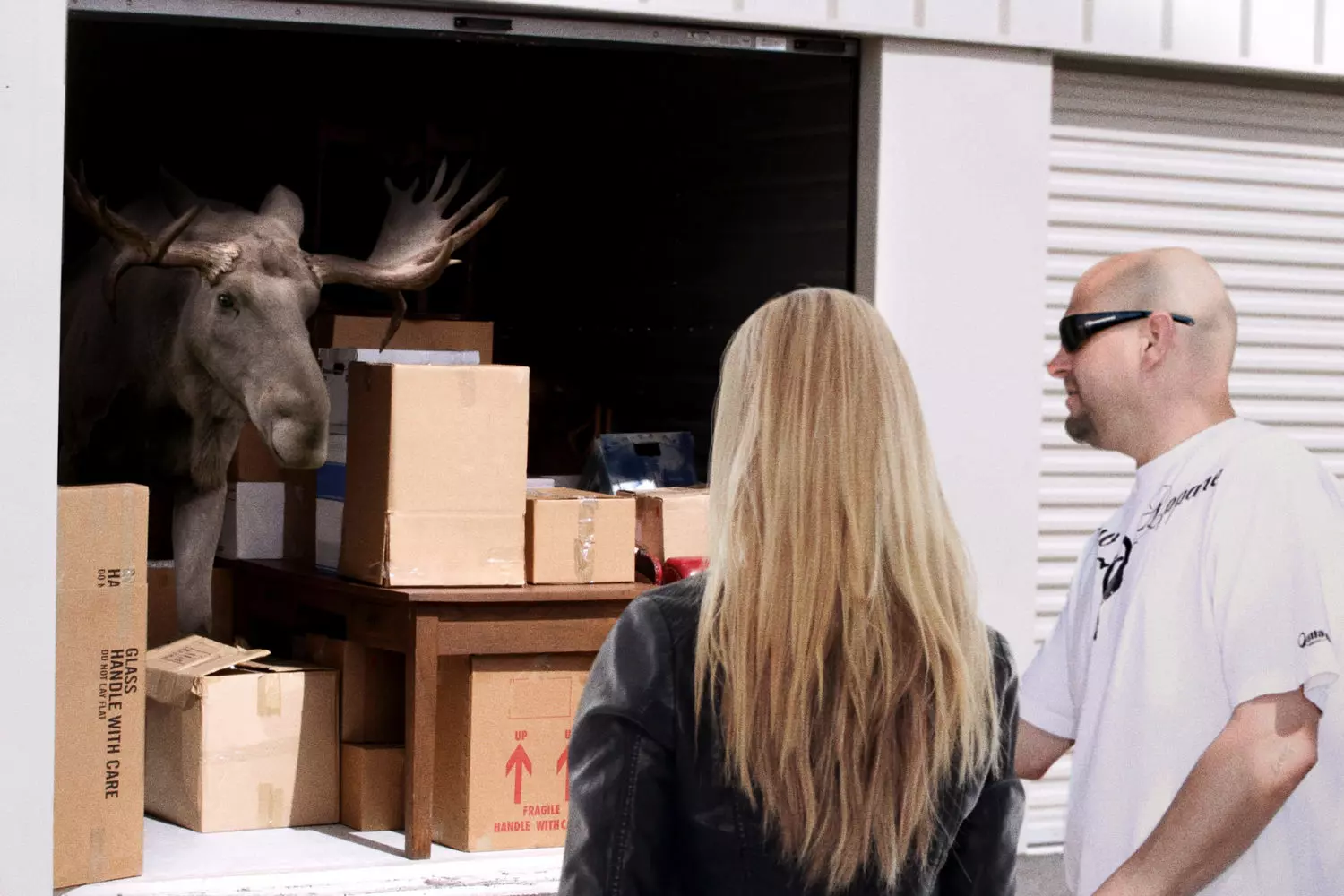
American Butler — Your Personal Assistant and Guide to Life in the USA
If self-storage is about order and comfort, then American Butler is about everything else that makes your stay in the USA easy, safe, and truly enjoyable. We combine the functions of a personal assistant, guide, and organizer so you can focus on what matters most — enjoying America.
- 01. For people who are relocating
Moving to another country is always a challenge. We help make it as comfortable as possible:
- We find a reliable storage unit nearby with the right level of security and climate control;
- Organize transportation of your belongings and professional packing;
- Assist in settling in: finding housing, buying furniture, connecting internet, and handling everyday matters.
- 02. For tourists and travelers
Visiting the USA for vacation or travel light? We know how to make your trip perfect:
- Arrange temporary storage for your belongings during trips or flights;
- Offer travel routes, tickets, hotel bookings, and excursions;
- Advise on the best places to rent a car, buy electronics, clothing, or gifts;
- Accompany you on private tours in New York, Miami, Los Angeles, and other cities.
- 03. Premium concierge service
We are not just intermediaries. We are your people in America.
- Book a restaurant, concert, or private tour;
- Arrange transfers, airport pickups, or VIP services;
- Assist with documents, shopping, medical appointments, and business meetings;
- Provide a personal assistant who handles any task 24/7.
With us, America stops being a foreign country — it becomes your home, where everything is already taken care of.














